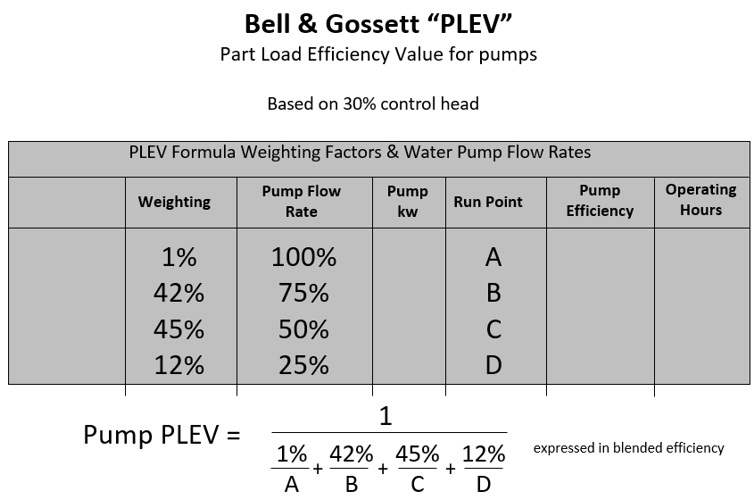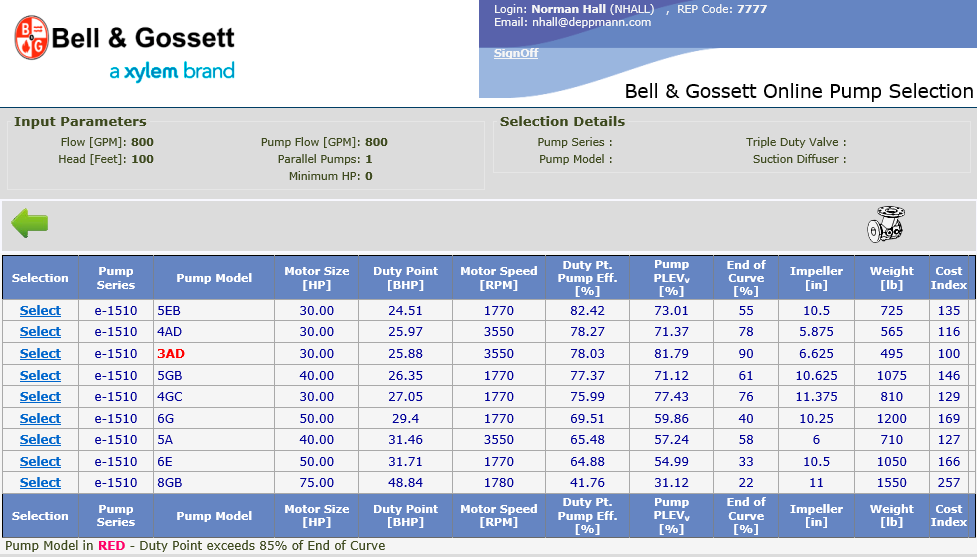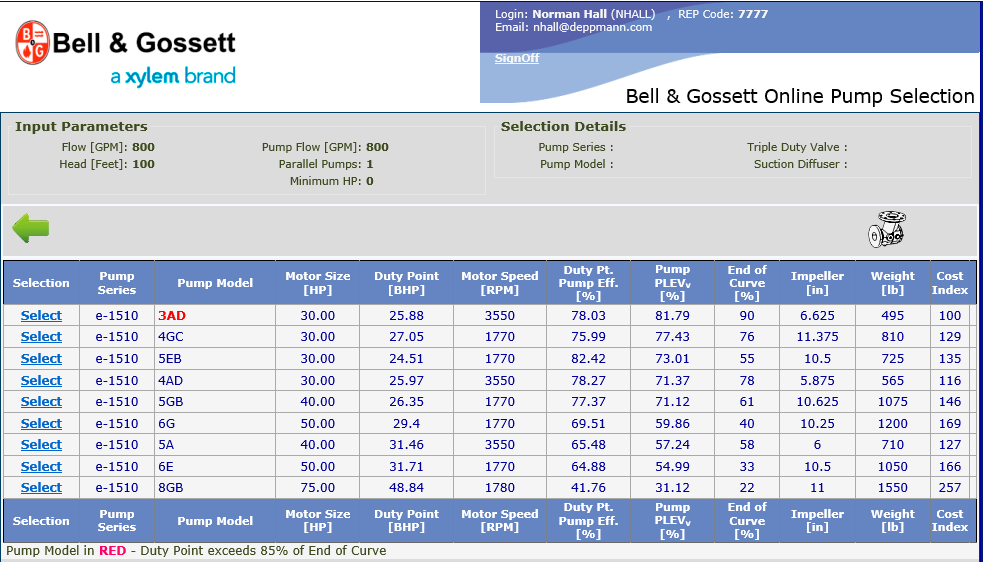In the last Monday Morning Minutes post, we introduced the PLEV, or Part Load Efficiency Value from Bell and Gossett. This week we look at some selections and how to use PLEV.
Bell and Gossett developed PLEV to create a weighted average of the pump efficiency for the HVAC and plumbing industry. This new efficiency average gives the engineer or designer an efficiency that may more closely represent the actual efficiency of a variable volume system.
Using Bell and Gossett’s ESP-PLUS for Energy Analysis
Let’s use an example to show how the PLEV may be used as part of the selection criteria. Assume we have a heat pump system requirement of 800 GPM at 100 feet of head in a variable volume, variable speed application. The pump selection is shown below.
Notice the traditional duty point efficiency column. The selection is sorted by this column when it first appears. The 1510-5EB with a 30 HP motor is a nice selection. If the pump ran at design flow and head all the time, then the efficiency would be 82.42%. But this is a variable speed, variable volume pump so the efficiency of that selection using the PLEV load profile is 73.01%.
This is what we should use in any system energy analysis software as the average efficiency.
Let’s click on the Pump PLEV column and re-sort to see what the most efficient pump will be during variable speed operation.
Once we sort on PLEV we see different selections. The most efficient pump for this application is a 3500 RPM selection. The choice, if we choose to a 1750 selection is the e-1510-4GC with a PLEV of 77.43%.
Visit the B&G site to get a password for the selection program.
Next week we will look at these selections and question why we might consider a selection with less efficiency as our choice to schedule and recommend to our client.




